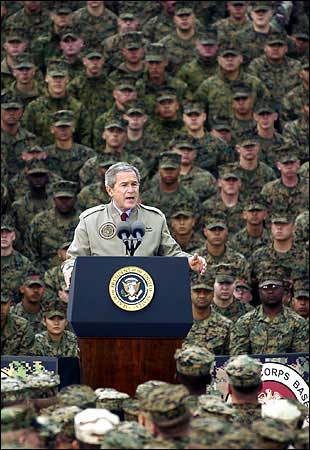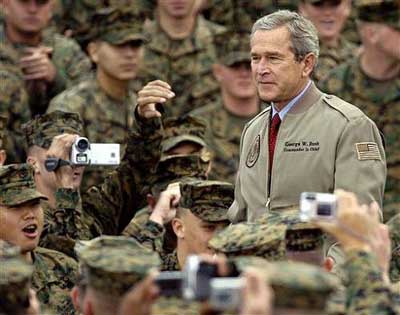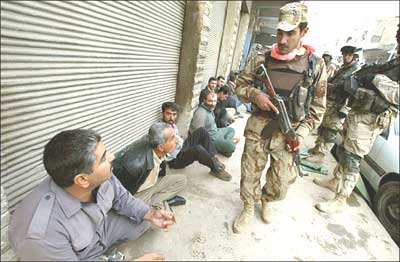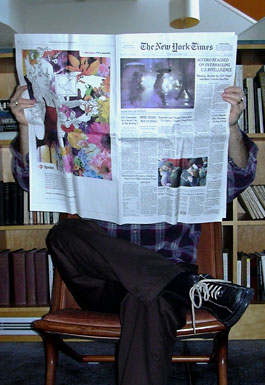Notes
Show of Support

It was if, for one day, the campaign was still on.
George Bush, the war President, had come to Camp Pendleton in California to rally the troops. The result, if you look over the major newspapers and wire services, were dramatic images of the president from the back, from the front and from above in a seemingly endless sea of soldiers.
If the cover message, however, was to honor our brave fighting men and women, there were enough details to suggest a broader agenda. For a White House enterprise that traffics in impressions at the expense of facts, I would argue that this day (like most days, but especially those in which the President, troops and news cameras happen to converge) was as much about Bush, and the growing discomfort over his troubled war.
During the campaign, one of the most popular criticisms of the president involved his record of appearing in more kinds of uniforms than any predecessor — veteran or otherwise. This time, Bush appeared in a quasi-official, light grey Eisenhower-style jacket with the suggestion of shoulder boards. On one breast was displayed a seal of the president. On the opposite was stitched the words “George W. Bush, Commander in Chief.”
Because of the pervasive way in which commercial products are now regularly imbedded in movies and television shows, people hardly seem to even notice it anymore. The AP image on the cover of today’s NYTimes, however reads as much like independent photojournalism as it does product placement. Notice, the Presidential logo is clearly visible not once, but twice, while, at the same time, the “competing product,” the Marine Corp logo, positioned along a railing, is about 80% obscured. Beyond the repetition, the elements on Bush’s jacket also seem slightly larger than usual — as if designed for better appearance in print and on television.
But what of the intent to honor the soldiers? When you draw heightened attention in one direction, it’s natural something else has to suffer. Of course, nobody would have complained if Bush had worn the customary suit, or even a darker version of this same jacket so he wouldn’t stand out from the honorees like a lighthouse beacon. However, against the high contrast, jacket-as-billboard and the podium also bearing “his” logo — the soldiers come off no better than wallpaper.
There were two different types of shots from this event. The first were pictures of Bush formally addressing the troops (such as the AP image I linked to above that made the cover of the NYTimes). And then, there were more informal pix of Bush among the troops.
The informal shots are also relevant in relation to the product placement idea.

Apparently, a lot of these the troops have still and video cameras. As a result, a majority of the informal shots show multiple soldiers around Bush stretching or angling to take his picture. Looking at these images produces a slightly strange effect. While they obviously show the troops “at ease,” the fact they all look alike and are known to typically operate under a strict regimented code of behavior makes it odd to see them going half bananas to get a picture of the president. If this was a USO show and it was an entertainer or a Hollywood celebrity in the middle of the crowd, it might seem more conventional. In this scene, though, it’s not as straightforward who’s here for whom, and why.
(On the other hand, maybe I’m just denying the reality of an increasingly commercialized culture, media and military. If so, then I guess nothing would be more appropriate in inspiring our idolizing troops then to turn them into photo extras and paparazzi.)
(image 1: AP Photo/Denis Poroy at NYTimes.com (article link))
(image 2: AP Photo/Denis Poroy at San Diego Union/Tribune Signonsandiego.com)


Reactions
Comments Powered by Disqus